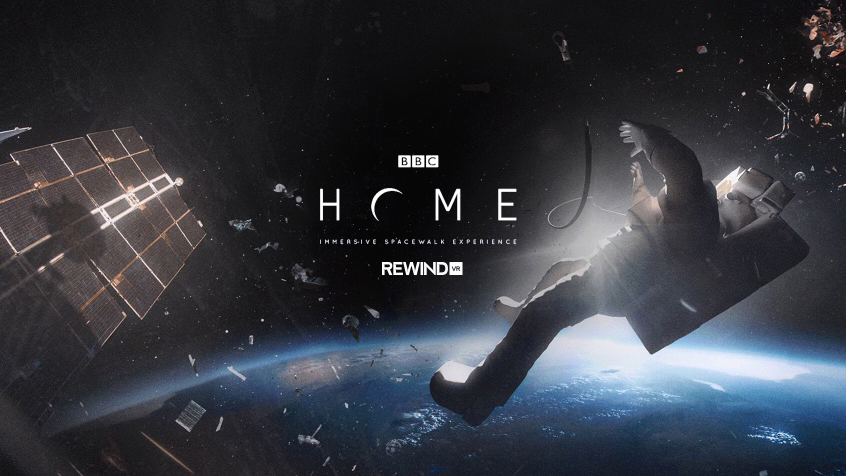How VR will make astronauts out of all of us
Float outside the ISS, or take a stroll on the Red Planet…

VR is set to shake up many different aspects of our lives, from entertainment and education to on-the-job training and sex. But arguably it has the most potential to really capture our collective imagination – to keep us coming back for more and provide the most educational value – when the experience feels like something you couldn’t ever go and try out for yourself in the real world.
Space travel is one such experience, and everyone from Nasa to the BBC, along with assorted developers, media companies, game designers and scientists, is using Virtual Reality to help us experience the final frontier like never before.
From rigorous training programmes designed to get astronauts used to living in deep space through to indie games dreamed up to allow anyone to float around the solar system with an affordable headset, there are already lots of VR projects offering experiences that are truly out of this world.
Here are just a few of the ways VR is currently being used, and could be used in the future, both to advance space exploration and to engage and entertain Earth-bound mortals in our living rooms, classrooms and cinemas.

Nasa’s VR experiments
Nasa has been working on VR prototypes for all kinds of purposes since way back in the 1980s, and the tech it’s developed has played an important part in training and guiding astronauts, as well as enabling experts to build better VR experiences.
But the recent wave of innovation from VR platforms like Oculus Rift, PlayStation VR and HTC Vive has opened up even more possibilities, and Nasa has partnered with some of the biggest names in the VR industry to make the tech even more accessible.
In a recent news release from Nasa, Josh Kinne, a deputy project manager at Nasa Langley’s Flight Projects Directorate, said: “Virtual reality and augmented reality used to be too expensive or too challenging for an individual researcher to use on their own.”
Sign up for breaking news, reviews, opinion, top tech deals, and more.
“The way the hardware has become commoditised […] means that even with a basic understanding of these 3D engines, you can actually create meaningful content as actual applications, or for research and development.”

And the research and development applications already feel pretty limitless. At a recent event at Nasa's Jet Propulsion Lab (JPL), the team presented the potential of using the Microsoft HoloLens and a reconstruction of the Martian surface called OnSight.
The OnSight team was led by Matthew Clausen, the creative director of JPL's Ops Lab, and Marijke Jorritsma, an NYU graduate student and intern at JPL. Jorritsma told Space.com that using VR isn’t just about entertainment.
"One of the interesting things that happened when scientists first used this is that they realised they could run up a hill to get spatial awareness of the scene," Jorritsma said. "So they immediately were able to start using it and thinking about it in a spatial way, as soon as they put on the devices.”
The same team is also working on an application called Project Sidekick. This allows experts to guide astronauts on the International Space Station and wearing Microsoft's HoloLens through detailed procedures, by watching the astronaut’s actions and overlaying their expert guidance, additional information and diagrams. There’s also ProtoSpace, which enables spacecraft designers wearing the HoloLens to work with what is essentially a holographic CAD model.
“Our objective is to improve the experience for your other senses so it feels less like headset and more like a holodeck.”
Matthew Noyes, Nasa
Recently, Nasa teamed up with chip maker Nvidia to create what it refers to as Hybrid Reality, which is essentially a mixture of VR and real life experiences. This allows Nasa to track physical spaces and model them around around real environments, giving astronauts a true feel of what it’s like to be up in the ISS, or other space vehicles, without actually being there.
Matthew Noyes at Nasa’s Johnson Space Centre Hybrid Reality and Advanced Operational Concepts Lab told the Nvidia blog: “Hybrid Reality is about incorporating the best elements of physical and virtual realities to get the best of both worlds.”
“Right now, Geforce-powered room-scale VR in the HTC Vive transports you, visually, anywhere in the Universe. You really feel like you’re there. Our objective is to improve the experience for your other senses so it feels less like headset and more like a holodeck [the VR simulation aboard the USS Enterprise in the Star Trek series and movies].”
To make these Hybrid Reality environments even more effective, Nasa has also teamed up with Manus VR. This pioneering company translates real-world experiences into a VR environment with dedicated VR gloves, creating training simulations that feel and look as real as possible.
Astronaut training – both on Earth and on-the-job clearly lends itself to the potential of VR. But what about helping astronauts cope with the psychological impact of being up in space?
Senior research scientist Peggy Wu has been using virtual environments to provide psychological support to astronauts in space for some time. Like Nasa and Nvidia's Hybrid Reality, her latest project, called Ansible, has echoes of the Enterprise’s holodeck, allowing astronauts to take a break from space while they're still up there.
Wu is currently working to create a number of fictional environments, from hometown scenes to nature preserves and beach vacations, that are designed to combat the effects of sensory monotony and social isolation, and which astronauts can experience via VR.
Main image credit: Home A VR Spacewalk Via REWIND
- These are the best VR headsets you can buy right now.

Becca is a contributor to TechRadar, a freelance journalist and author. She’s been writing about consumer tech and popular science for more than ten years, covering all kinds of topics, including why robots have eyes and whether we’ll experience the overview effect one day. She’s particularly interested in VR/AR, wearables, digital health, space tech and chatting to experts and academics about the future. She’s contributed to TechRadar, T3, Wired, New Scientist, The Guardian, Inverse and many more. Her first book, Screen Time, came out in January 2021 with Bonnier Books. She loves science-fiction, brutalist architecture, and spending too much time floating through space in virtual reality.
